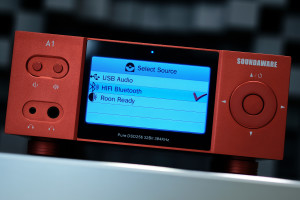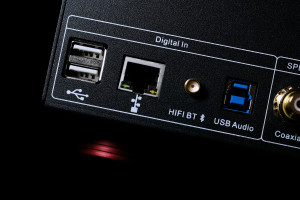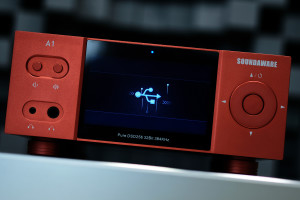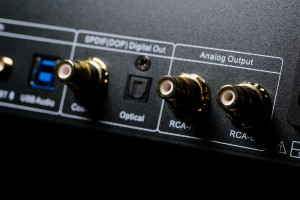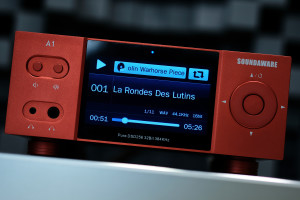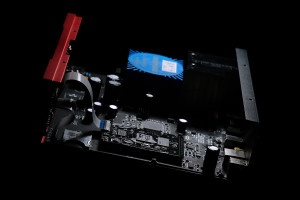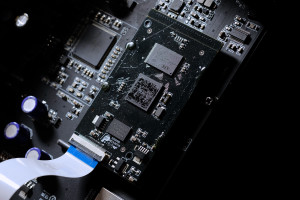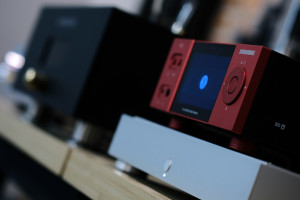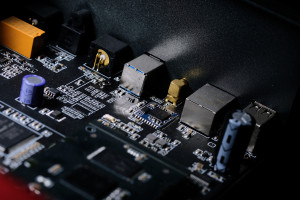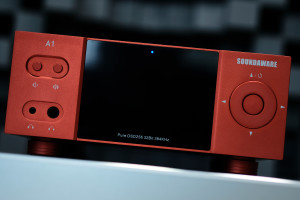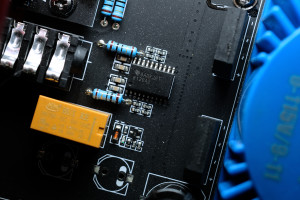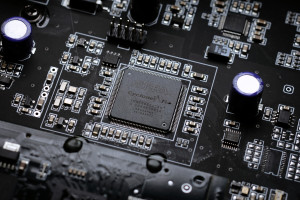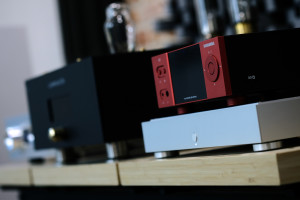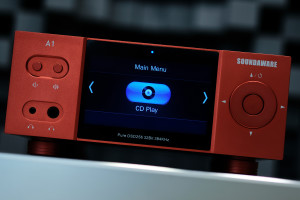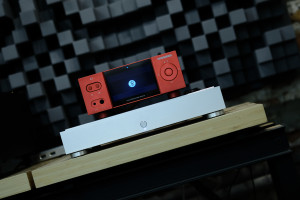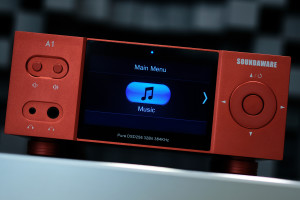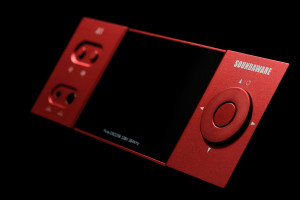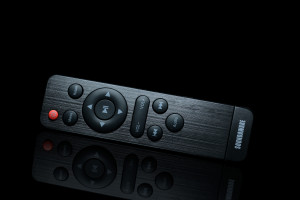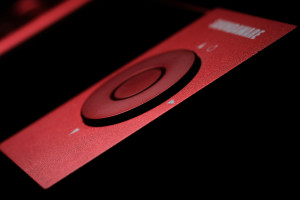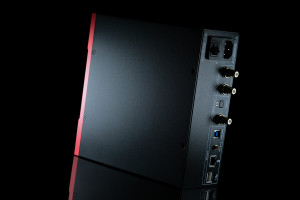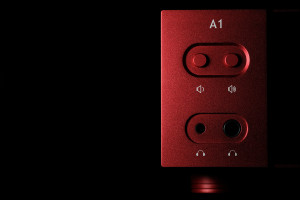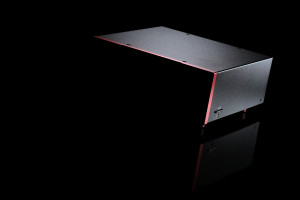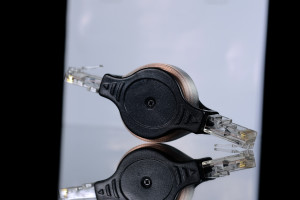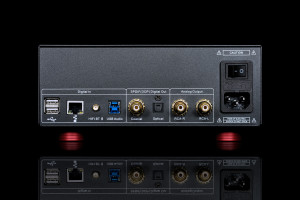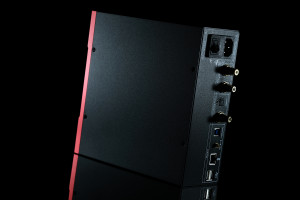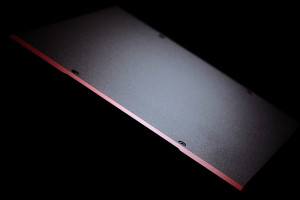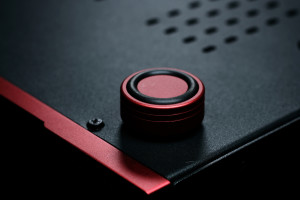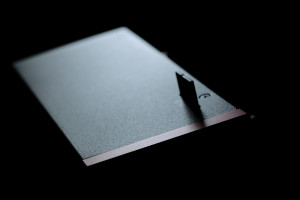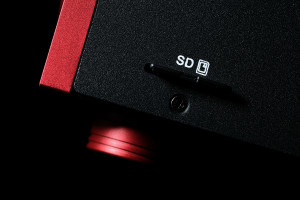The Soundaware company is known for attractively priced audio goods up there on functionality and sound quality, whereas this review’s main dish – Soundaware A1 – not only is its latest, but also the most affordable in the whole lineup. Is the newcomer any good?
Introduction
One of Srajan’s contributors – Dan S. – had this to say in his 6moons.com profile description: “It’s more fun and meaningful to discover something that gets to 95% of the possible at just 10% of the cost”. Now if a random individual into budget hardware would’ve come up with something of the sort, I’d be hesitant to agree. Hobbyists tend to be strongly biased towards their own purchases. Still, the 95% case gains impact and meaning if tackled by someone who spent heavy six digits on audio goods over the years, and developed immunity to price tags in the process, that would be Dan. Due to the obvious reason of not sleeping on cash, I can’t compete with the man. However, my own experience with products made by i.e. JOB, Kinki Studio or Luna Cables also reassured me that no big buck needs to be spent in order to push sound quality truly far. Srajan pointed me towards many such brands via his work, today’s Soundaware included, whereas its A1 model also seems to have just what it takes to fit the profile. All Soundaware items reviewed at 6moons.com scored high on the performance scale and were competitively priced, which proved to be more than enough for me to investigate. The opportunity to do so emerged in November 2018 in Warsaw, the Soundaware team exhibited at the Radisson Blu Sobieski hotel during the local Audio Video Show. There I could take a look at this operation’s goods up close, and also have a chat with its marketing manager Lesley. People who entered this particular room seemed mildly interested at best early on, most likely due to local bias towards Soundaware’s Chinese pedigree. The result afterwards? Many smiles and chit-chats heard outside the place confirmed love in the air. Most visitors weren’t quite prepared for what they’ve heard in there, on the contrary to yours truly already fully aware of this brand.
All Soundaware items reviewed at 6moons.com scored high on the performance scale and were competitively priced, which proved to be more than enough for me to investigate. The opportunity to do so emerged in November 2018 in Warsaw, the Soundaware team exhibited at the Radisson Blu Sobieski hotel during the local Audio Video Show. There I could take a look at this operation’s goods up close, and also have a chat with its marketing manager Lesley. People who entered this particular room seemed mildly interested at best early on, most likely due to local bias towards Soundaware’s Chinese pedigree. The result afterwards? Many smiles and chit-chats heard outside the place confirmed love in the air. Most visitors weren’t quite prepared for what they’ve heard in there, on the contrary to yours truly already fully aware of this brand.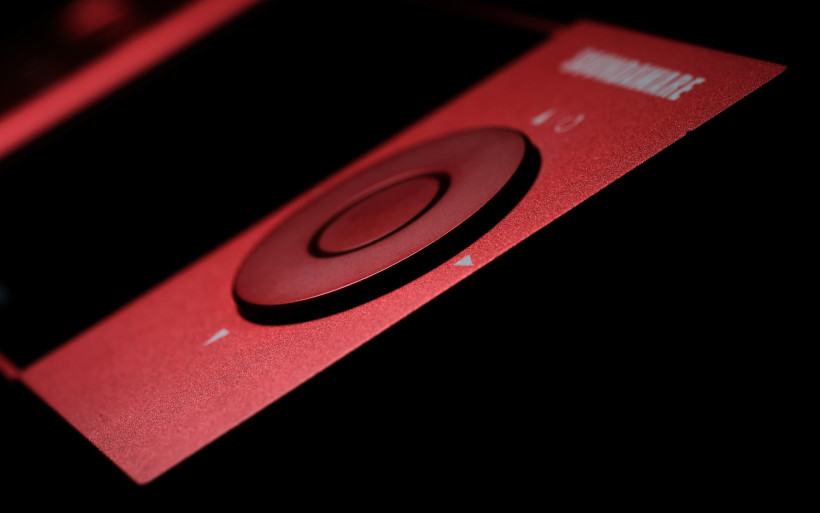 Past the Soundaware experience on the local soil, it was time to contact Lesley and, long story’s short, that’s how this review came to be. This company’s portfolio consists of three ranges in total; the M involves two DAPs, the D is all about digital transports, and today’s A family incorporates machines fit to handle transport and D/A duties. Additionally there’s also a CD ripping box known as CD-ONE, and the P1 headfi deck described by forum enthusiasts as able to handle HifiMan’s notorious Susvara cans. However, the product sent my way was Soundaware’s latest A1 model, which also happens to be one of the most affordable ones in the whole lineup.
Past the Soundaware experience on the local soil, it was time to contact Lesley and, long story’s short, that’s how this review came to be. This company’s portfolio consists of three ranges in total; the M involves two DAPs, the D is all about digital transports, and today’s A family incorporates machines fit to handle transport and D/A duties. Additionally there’s also a CD ripping box known as CD-ONE, and the P1 headfi deck described by forum enthusiasts as able to handle HifiMan’s notorious Susvara cans. However, the product sent my way was Soundaware’s latest A1 model, which also happens to be one of the most affordable ones in the whole lineup.
Build
The loaner arrived in a cardboard within a cardboard. Snug via plastic bag and put in-between two foam forms, it was perfectly safe. The semi-matte main box loaded with the core content’s picture and several descriptive taglines, invoked the sensation associated with regular IT appliance found in typical large media stores. No audiophile poshness, on the contrary to utmost practical and informative approach. ‘Hi-Res DSD Streaming Music Player’ says it all, doesn’t it? Inside the package I also found one of each; an English manual, power cord, cleverly retractable RJ45 cable, Bluetooth antenna and also utmost useful plastic RC with rubber buttons.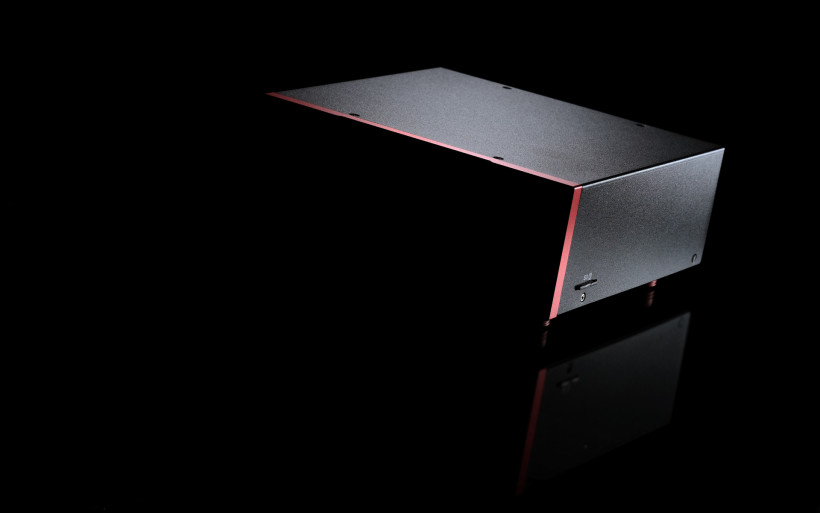 Soundaware A1 measures (W x H x D) 215 x 80 x 215mm and weighs just 2.82 kilograms, hence not only it’s perfectly manageable, but also surprisingly small for what it is capable of. Truth told, several years back this item’s functionality was unheard of, whereas all this goodness dressed in a very compact nicely executed package priced to sell volume, is the reality of today. The A1’s precisely married aluminium and steel parts form an appealing chassis with just a handful of plastic buttons here and there. Once this item’s price factors in, any bad word as far as its put-togetherness goes would be nothing short of silly.
Soundaware A1 measures (W x H x D) 215 x 80 x 215mm and weighs just 2.82 kilograms, hence not only it’s perfectly manageable, but also surprisingly small for what it is capable of. Truth told, several years back this item’s functionality was unheard of, whereas all this goodness dressed in a very compact nicely executed package priced to sell volume, is the reality of today. The A1’s precisely married aluminium and steel parts form an appealing chassis with just a handful of plastic buttons here and there. Once this item’s price factors in, any bad word as far as its put-togetherness goes would be nothing short of silly.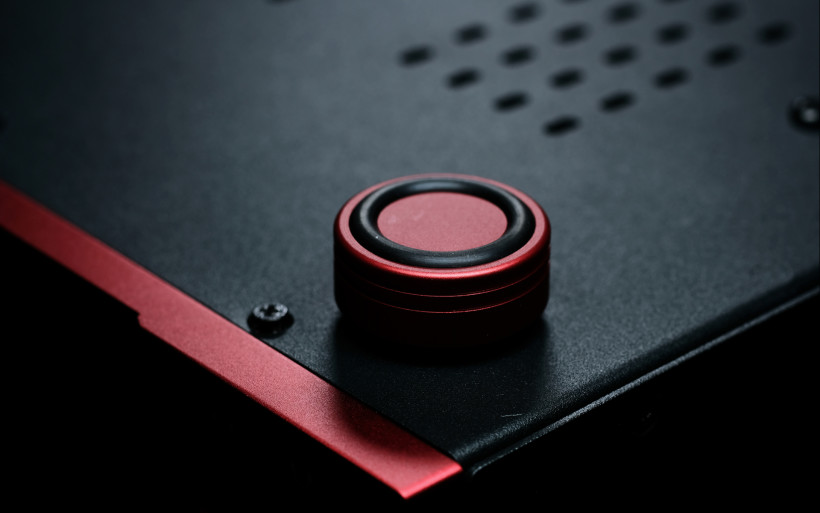 My loaner’s thick aluminium panel finished to high standards is available in several colours. Red was the reasonable pick to have the product nicely showcased and not entirely lost on that black background I’ve been exploiting. The A1’s front sports two volume buttons up high on the left, the two neighbouring headphone outs – 3.5 and 6.3mm – are found down below. The large display in the middle of the product is of low res enough to spot single pixels up close, though in general readable and very useful. The area a bit further to the right is occupied by a circular scheme based on five navigation/selection buttons. The U-shaped sheet of metal serves as the main enclosure piece, loaded with a handy SD card socket on one of its cheeks. Today’s hardware sits on four aluminium pucks loaded with rubber washers to keep it in place, and its underbelly is perforated to dissipate heat from the inside. If one would like to dress his/hers A1 even nicer, the manufacturer offers several stickers to almost entirely cover the steel part of its enclosure.
My loaner’s thick aluminium panel finished to high standards is available in several colours. Red was the reasonable pick to have the product nicely showcased and not entirely lost on that black background I’ve been exploiting. The A1’s front sports two volume buttons up high on the left, the two neighbouring headphone outs – 3.5 and 6.3mm – are found down below. The large display in the middle of the product is of low res enough to spot single pixels up close, though in general readable and very useful. The area a bit further to the right is occupied by a circular scheme based on five navigation/selection buttons. The U-shaped sheet of metal serves as the main enclosure piece, loaded with a handy SD card socket on one of its cheeks. Today’s hardware sits on four aluminium pucks loaded with rubber washers to keep it in place, and its underbelly is perforated to dissipate heat from the inside. If one would like to dress his/hers A1 even nicer, the manufacturer offers several stickers to almost entirely cover the steel part of its enclosure. My loaner’s rear is occupied by five digital inputs in total; 2x USB type A, RJ45, USB3.0 type B and wireless via BT. One coaxial and optical S/PDIF next in line send digital data out, and neighbour with one RCA analog out found right next to an IEC with the main on/off switch and self-replaceable fuse. Once all this is taken into account, the A1 is a very versatile do-it-all case clearly designed to please everyone into digital music. It’d be far easier to list things this machine can’t do. First and foremost, it’s a DAC/streamer/storage combo affair capable of standalone work, but also a headfi integrated deck, transport for other machines and a Roon endpoint on top of that.
My loaner’s rear is occupied by five digital inputs in total; 2x USB type A, RJ45, USB3.0 type B and wireless via BT. One coaxial and optical S/PDIF next in line send digital data out, and neighbour with one RCA analog out found right next to an IEC with the main on/off switch and self-replaceable fuse. Once all this is taken into account, the A1 is a very versatile do-it-all case clearly designed to please everyone into digital music. It’d be far easier to list things this machine can’t do. First and foremost, it’s a DAC/streamer/storage combo affair capable of standalone work, but also a headfi integrated deck, transport for other machines and a Roon endpoint on top of that.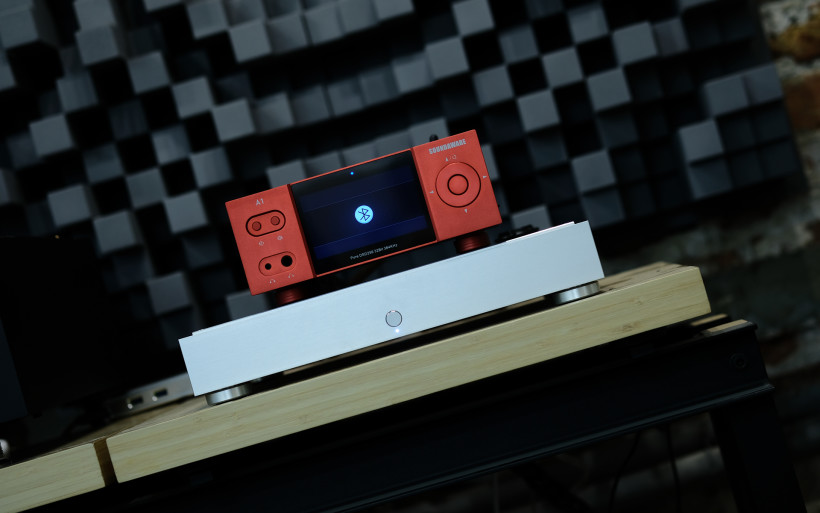 Soundaware A1 can be fed with content stored on SD, HDD or pendrive carriers hooked to one of its available ports, and will also gladly accept digital music from i.e. a laptop if used as a DAC connected to it. One can have today’s item operational in network environment through RJ45 (AirPlay, UPnP, DLNA, Roon) or directly stream music to it via BT from a smartphone. The product handles all key file formats and types including MQA, and natively digests PCM/DSD data up to 32bit/384kHz and 256 respectively. Regardless of music intake method, a typical A1 usage scenario would involve i.e. it married to a pair of active speakers, integrated deck or a line stage. Its regulated analog outs also allow direct connection to a power amp. Alternately, as a storage/streamer exclusively, it can send music via S/PDIF to a separate DAC. The A1 as a standalone do-it-all with nothing else connected but headphones and i.e. a pendrive with music, sounds like a plan too. Options, options, options.
Soundaware A1 can be fed with content stored on SD, HDD or pendrive carriers hooked to one of its available ports, and will also gladly accept digital music from i.e. a laptop if used as a DAC connected to it. One can have today’s item operational in network environment through RJ45 (AirPlay, UPnP, DLNA, Roon) or directly stream music to it via BT from a smartphone. The product handles all key file formats and types including MQA, and natively digests PCM/DSD data up to 32bit/384kHz and 256 respectively. Regardless of music intake method, a typical A1 usage scenario would involve i.e. it married to a pair of active speakers, integrated deck or a line stage. Its regulated analog outs also allow direct connection to a power amp. Alternately, as a storage/streamer exclusively, it can send music via S/PDIF to a separate DAC. The A1 as a standalone do-it-all with nothing else connected but headphones and i.e. a pendrive with music, sounds like a plan too. Options, options, options.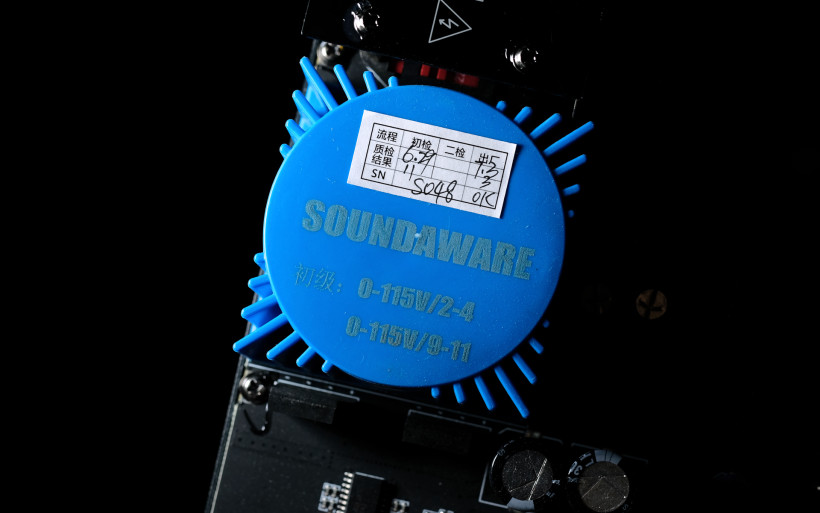 Soundaware A1 runs on proprietary graphic UI, operated either via buttons found on its front panel or RC included in the package. This simple and intuitive software isn’t instant in action, but responsive enough to not feel any major discomfort. Once powered on, the machine greets one with a brief loading screen to then showcase the main menu tab labeled as ‘Music’. In there a desired data carrier along with all its content displayed as file tree can be selected. The ‘play’ button on any listed track engages the A1’s music playback software operated as any other of the sort. This core feature aside, the product sports the usual suspects filed under several different option tabs; brightness, backlight on/off time, in-built digital volume control defeated/engaged, preferred language, network settings etc. A separate tab is devoted to the A1’s three operation modes; Roon endpoint, BT receiver and USB DAC. If any of these is selected, the product’s display then becomes locked with a suitable gfx. The ‘Sound settings’ screen also involves active filtering selection (default and smooth).
Soundaware A1 runs on proprietary graphic UI, operated either via buttons found on its front panel or RC included in the package. This simple and intuitive software isn’t instant in action, but responsive enough to not feel any major discomfort. Once powered on, the machine greets one with a brief loading screen to then showcase the main menu tab labeled as ‘Music’. In there a desired data carrier along with all its content displayed as file tree can be selected. The ‘play’ button on any listed track engages the A1’s music playback software operated as any other of the sort. This core feature aside, the product sports the usual suspects filed under several different option tabs; brightness, backlight on/off time, in-built digital volume control defeated/engaged, preferred language, network settings etc. A separate tab is devoted to the A1’s three operation modes; Roon endpoint, BT receiver and USB DAC. If any of these is selected, the product’s display then becomes locked with a suitable gfx. The ‘Sound settings’ screen also involves active filtering selection (default and smooth). Soundaware A1’s innards are nothing out of ordinary at first glance. One large PCB houses almost everything, and many elements have their labels removed. The Cyclone IV FPGA by Altera, TI’s 6120A2 headphone amp and NJR’s Muses op-amps were those I could identify. Elna Cerafine and Rubycon’s ZLH caps were in there as well. Both FPGA and XMOS run on in-house developed code, and BT transmission is subject to the former plus two separate clocks. The product’s PSU is based on an iron core transformer, high current power filter and multiple supply lines for key stages stabilized via ultra-low noise LDOs.
Soundaware A1’s innards are nothing out of ordinary at first glance. One large PCB houses almost everything, and many elements have their labels removed. The Cyclone IV FPGA by Altera, TI’s 6120A2 headphone amp and NJR’s Muses op-amps were those I could identify. Elna Cerafine and Rubycon’s ZLH caps were in there as well. Both FPGA and XMOS run on in-house developed code, and BT transmission is subject to the former plus two separate clocks. The product’s PSU is based on an iron core transformer, high current power filter and multiple supply lines for key stages stabilized via ultra-low noise LDOs.
Sound
In order to review Soundaware A1, fidata HFAS-S10U handled storage and transport duties, then LampizatOr Pacific DAC (KR Audio T-100 + KR Audio 5U4G Ltd. Ed.) took over to pass the signal either to Kinki Studio EX-M1 or Trilogy 925, and then to my Boenicke W8. All key components were connected via LessLoss C-MARC snakes to the GigaWatt PC-3 SE EVO+ power conditioner married to the in-wall outlet via LC-3 EVO cable by the same manufacturer. Interconnects used during the evaluation period were Erys Excellence Amber models by Audiomica Laboratory.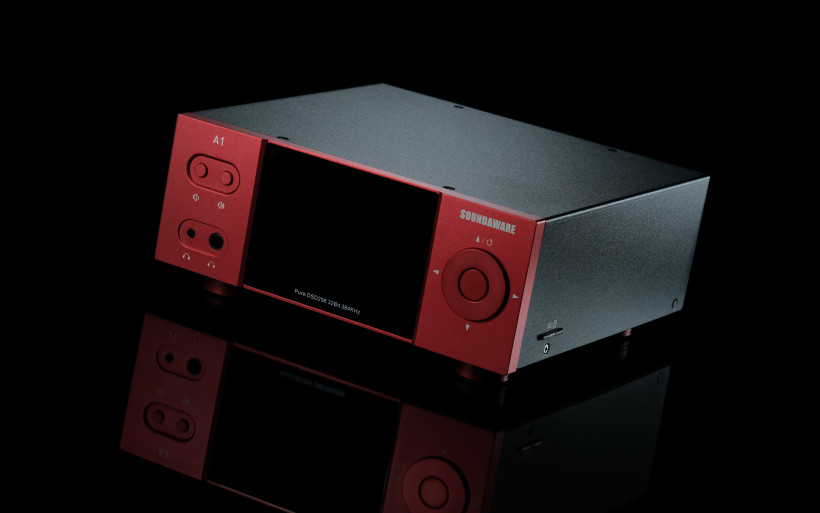 Due to the A1’s complex functionality, only several though specific usage scenarios were in order. The first one involved music intake via SD card and this machine as an all-in-one storage/streamer/DAC directly connected to my integrated amp and speakers. Then the SD carrier stepped down to make room for Bluetooth streaming, just to see how good Soundaware’s implementation of it was. Once all this was sorted, the A1 fed my reference DAC via coaxial S/PDIF instead of fidata’s HFAS-S10U to map the former’s transport/storage performance. And lastly, today’s did a solo act with nothing else involved but Beyerdynamic T1 2nd gen cans and Vision Ears VE5 CIEMs.
Due to the A1’s complex functionality, only several though specific usage scenarios were in order. The first one involved music intake via SD card and this machine as an all-in-one storage/streamer/DAC directly connected to my integrated amp and speakers. Then the SD carrier stepped down to make room for Bluetooth streaming, just to see how good Soundaware’s implementation of it was. Once all this was sorted, the A1 fed my reference DAC via coaxial S/PDIF instead of fidata’s HFAS-S10U to map the former’s transport/storage performance. And lastly, today’s did a solo act with nothing else involved but Beyerdynamic T1 2nd gen cans and Vision Ears VE5 CIEMs.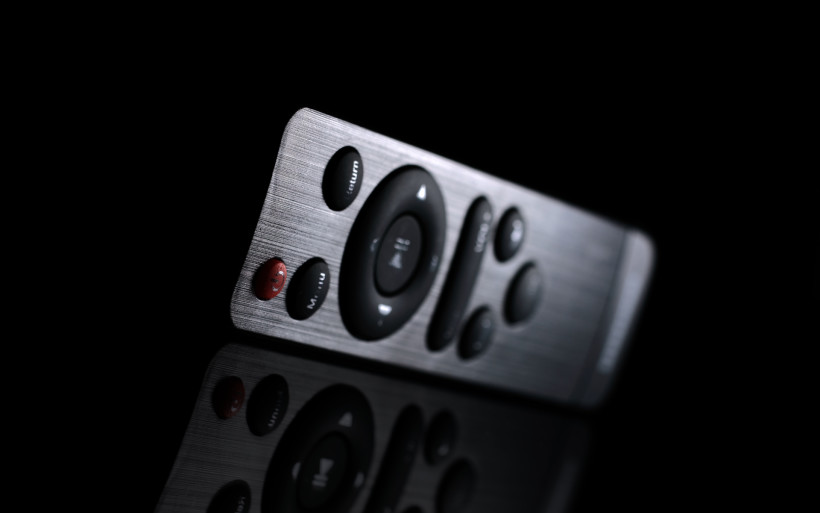 The idea of putting my reference tools against the dozens of times more affordable A1 might be viewed as not fair and in general silly. No sane person would go this route. However, I had to start somewhere, and after all exercises with listed items I’m happy that I did just that. The difference between both setups was nothing short of staggering and in favour of my daily hardware, just as it’s supposed to once all price tags are taken into account. But there’s far more to it, the A1 does very particular things and follows its own path. Plus, for the coin it sounds truly well.
The idea of putting my reference tools against the dozens of times more affordable A1 might be viewed as not fair and in general silly. No sane person would go this route. However, I had to start somewhere, and after all exercises with listed items I’m happy that I did just that. The difference between both setups was nothing short of staggering and in favour of my daily hardware, just as it’s supposed to once all price tags are taken into account. But there’s far more to it, the A1 does very particular things and follows its own path. Plus, for the coin it sounds truly well.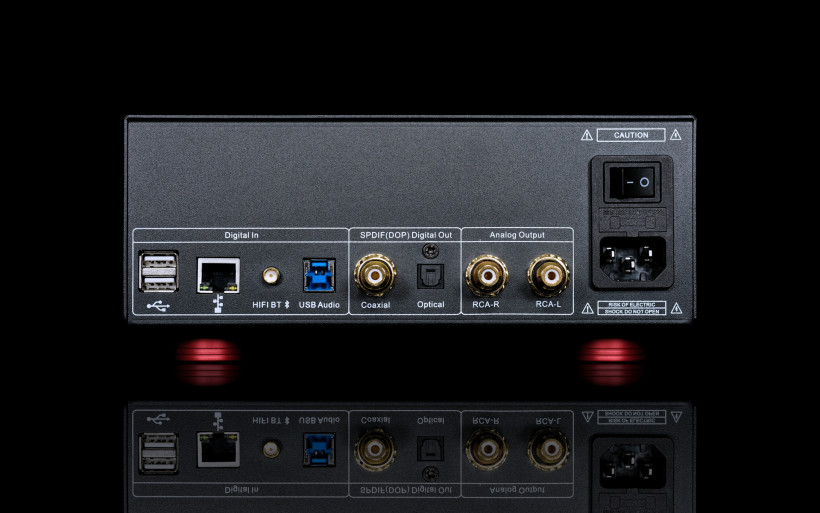 The most prominent difference between my Japanese storage/transport married to LampizatOr’s TOTL machine, and the standalone A1 was in their revealing potency. The former was far more explicit, feistier and dynamically unrestrained, to clearly aim at the effect very much associated with high fidelity, pinpoint accuracy, pristine and finely chiseled virtual sound sources plus grand and palpable landscapes. The far mellower latter had its gravitational center lower, sported less clarity, was slower and delivered image depth nowhere near as complex, also with the closest line of sounds put a fair bit behind the line of used speakers. It also scored way fever points on immediacy and sheer downstairs slam, even in spite of the audibly boosted upper bass realm. This description could’ve easily buried the A1 deep underground, but the described comparison was conducted solely to map its own sound flavour. At this point it was clear that it had one.
The most prominent difference between my Japanese storage/transport married to LampizatOr’s TOTL machine, and the standalone A1 was in their revealing potency. The former was far more explicit, feistier and dynamically unrestrained, to clearly aim at the effect very much associated with high fidelity, pinpoint accuracy, pristine and finely chiseled virtual sound sources plus grand and palpable landscapes. The far mellower latter had its gravitational center lower, sported less clarity, was slower and delivered image depth nowhere near as complex, also with the closest line of sounds put a fair bit behind the line of used speakers. It also scored way fever points on immediacy and sheer downstairs slam, even in spite of the audibly boosted upper bass realm. This description could’ve easily buried the A1 deep underground, but the described comparison was conducted solely to map its own sound flavour. At this point it was clear that it had one.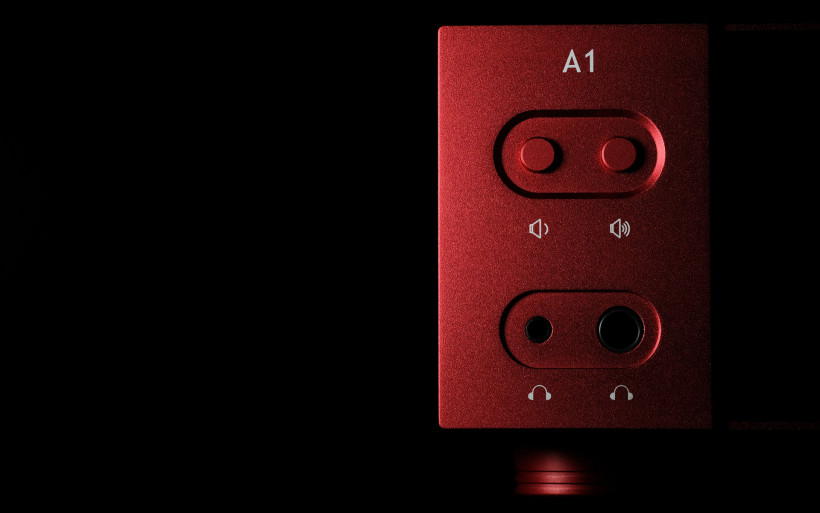 If swift attack, full openness, sensibly movable soundstage, precision, resolution and the lot step down to make room for saturation generosity, warmth, relaxed attitude, softness, mild veil and chunky bass, the effect is voicing heavily focused on pleasure. In a nutshell, that’s the A1’s angle. Soundaware’s latest doesn’t play the high fidelity game and it doesn’t pretend to be something it’s not in the first place. Instead of struggling to do all there is, its makers decided to go the thick, round, musical and crowd-pleasing route. Yet again, mid three digits ask one simply can’t have everything and having said this, my ears appreciated smart voicing choices behind the A1.
If swift attack, full openness, sensibly movable soundstage, precision, resolution and the lot step down to make room for saturation generosity, warmth, relaxed attitude, softness, mild veil and chunky bass, the effect is voicing heavily focused on pleasure. In a nutshell, that’s the A1’s angle. Soundaware’s latest doesn’t play the high fidelity game and it doesn’t pretend to be something it’s not in the first place. Instead of struggling to do all there is, its makers decided to go the thick, round, musical and crowd-pleasing route. Yet again, mid three digits ask one simply can’t have everything and having said this, my ears appreciated smart voicing choices behind the A1.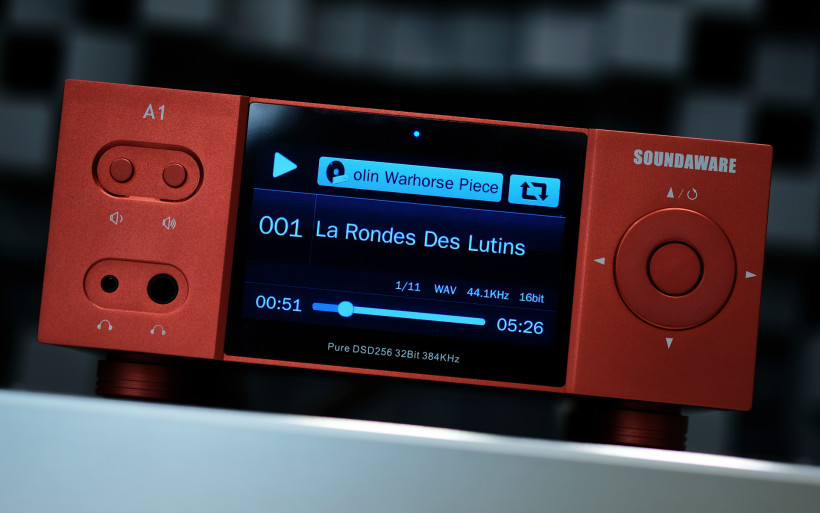 The story above was based on my Trilogy 925 integrated machine, on some counts similar to today’s product. Naturally there was no synergy between the two, some changes had to be made and the clear choice was Kinki Studio EX-M1. In comparison to the 925, this Chinese deck’s faster, more open and leaner attitude plus loads of juice on tap, simply work with my W8 floorstanders better. As such, the Kinki had to elevate the experience with the A1 and it did just that.
The story above was based on my Trilogy 925 integrated machine, on some counts similar to today’s product. Naturally there was no synergy between the two, some changes had to be made and the clear choice was Kinki Studio EX-M1. In comparison to the 925, this Chinese deck’s faster, more open and leaner attitude plus loads of juice on tap, simply work with my W8 floorstanders better. As such, the Kinki had to elevate the experience with the A1 and it did just that.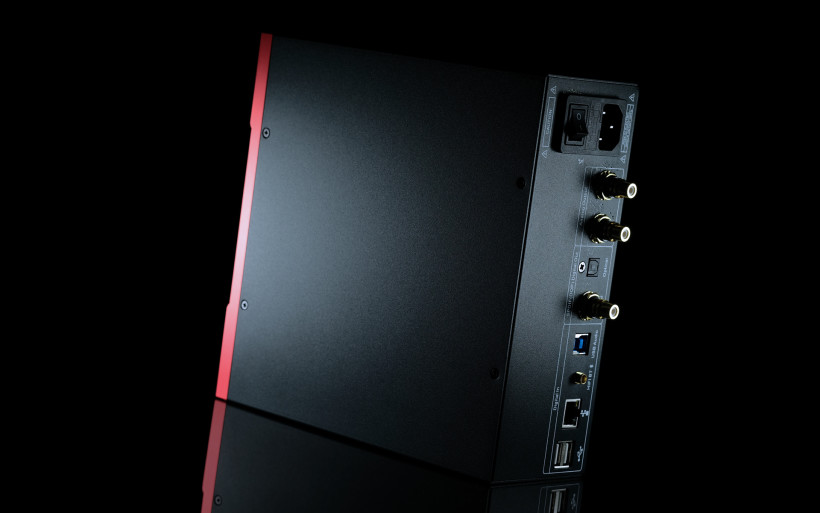 With the EX-M1 on duty, several predictable and desired changes occurred. The A1 connected to the Chinese integrated still reached nowhere near my reference digital end’s quality and poshness level. However, with Kinki Studio’s hardware the effect was far more synergistic than previously; the veil got far thinner, attack improved and quite significant liposuction was performed to have everything less bloated but more visible and fit, whereas extra air dose injected into musical landscape in front of me opened up the overall view nicely. All these measures not only were clear upgrades to my ears, but also elevated the A1’s own potential. What didn’t change much was sensible bass boost, but the EX-M1 held downstairs in tighter grasp to have this FR part far less troublesome than before. Also, due to the new and naturally informative amp on the job, the A1’s still a bit distant first row of sound sources gained extra points on the clarity scale. All things considered, once fed with SD card and connected to the clearly synergistic companion, this petite deck pulled off impressive performance for the coin.
With the EX-M1 on duty, several predictable and desired changes occurred. The A1 connected to the Chinese integrated still reached nowhere near my reference digital end’s quality and poshness level. However, with Kinki Studio’s hardware the effect was far more synergistic than previously; the veil got far thinner, attack improved and quite significant liposuction was performed to have everything less bloated but more visible and fit, whereas extra air dose injected into musical landscape in front of me opened up the overall view nicely. All these measures not only were clear upgrades to my ears, but also elevated the A1’s own potential. What didn’t change much was sensible bass boost, but the EX-M1 held downstairs in tighter grasp to have this FR part far less troublesome than before. Also, due to the new and naturally informative amp on the job, the A1’s still a bit distant first row of sound sources gained extra points on the clarity scale. All things considered, once fed with SD card and connected to the clearly synergistic companion, this petite deck pulled off impressive performance for the coin.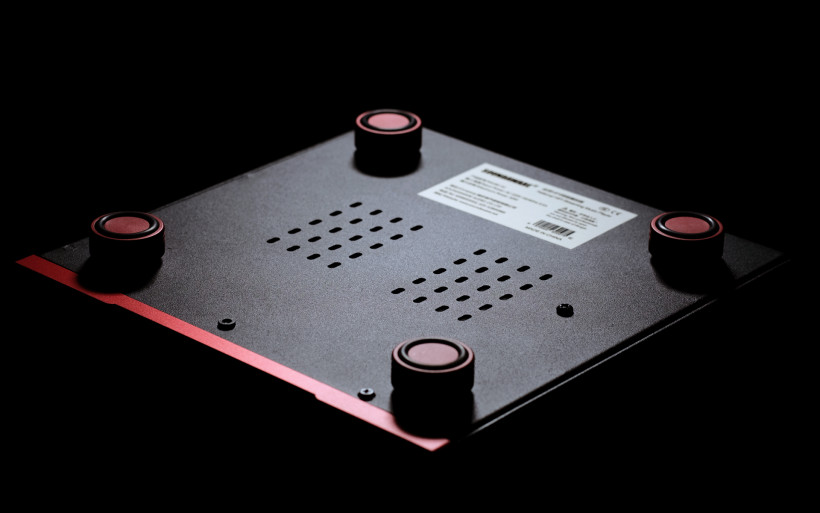 Smart tuning decisions aside, the A1’s most surprising feature was its soundstage’s width and height. Affordable sources tend to fall flat in comparison to my reference platforms on these counts, however the A1 removed my floorstanders from sight swiftly and rather effortlessly, and filled the usual listening space with evenly displayed virtual image not locked in-between these at all. I’m very much used to spatial grandness of my Swiss boxes, any shrinkage in this regard my ears take personally, and the A1 didn’t put any restraints on these speakers. Good job.
Smart tuning decisions aside, the A1’s most surprising feature was its soundstage’s width and height. Affordable sources tend to fall flat in comparison to my reference platforms on these counts, however the A1 removed my floorstanders from sight swiftly and rather effortlessly, and filled the usual listening space with evenly displayed virtual image not locked in-between these at all. I’m very much used to spatial grandness of my Swiss boxes, any shrinkage in this regard my ears take personally, and the A1 didn’t put any restraints on these speakers. Good job. Once the core voice of the A1 was known, the time has come to exploit this product solely as a storage/transport, hence my DAC was fed via its coaxial S/PDIF out, but the opponent – fidata HFAS-S10U – could only get into my reference D/A deck through its USB in. The ideal scenario would involve data sent to my Pacific machine in the same exact way from both devices, but this was off the table. That’s why it’s fair to point out that not only fidata’s and Soundaware’s products were compared, but also two of my LampizatOr’s digital inputs. It is what it is.
Once the core voice of the A1 was known, the time has come to exploit this product solely as a storage/transport, hence my DAC was fed via its coaxial S/PDIF out, but the opponent – fidata HFAS-S10U – could only get into my reference D/A deck through its USB in. The ideal scenario would involve data sent to my Pacific machine in the same exact way from both devices, but this was off the table. That’s why it’s fair to point out that not only fidata’s and Soundaware’s products were compared, but also two of my LampizatOr’s digital inputs. It is what it is.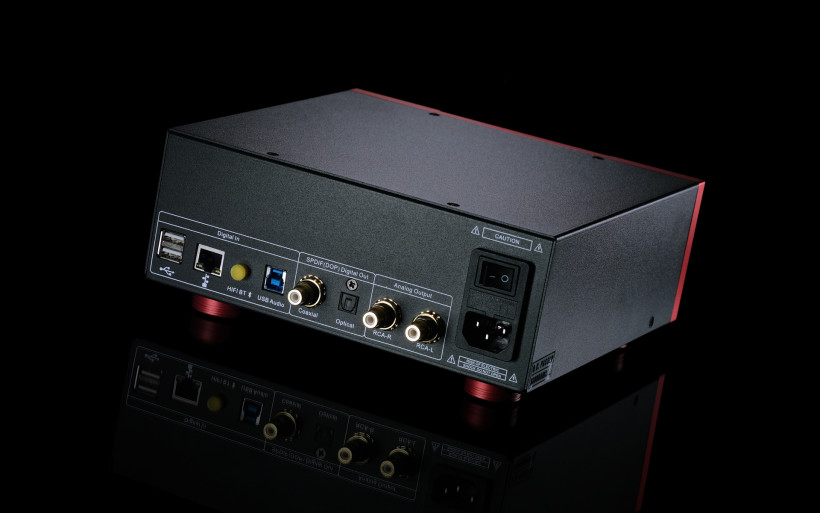
The A1 on the storage/transport job introduced far different flavour in comparison to the previous scenario. As the former, it sounded more agile, fit, explicit and in general clearly leaned towards high fidelity. It sported lesser input of its own in the process to now have my DAC’s sporty character on the pedestal. But the most impactful change that occurred involved voices; served closer and in effect more accordingly to their normal place in recordings. But even in spite of all the benefits the A1 introduced in the new role, fidata’s machine was still elusive. The key disparities between the two were found on tangibility, resolution, overall vividness and pronunciation counts. The far pricier Japanese product sounded more enchantingly, tunefully and provided more insight into music on top of that. In the end this didn’t change the fact that the A1 as a storage/transport product proved to be not only very good for the money again, but realistically far better than its ask suggested. Past the skirmish with fidata’s hardware, Soundaware’s machine to my ears morphed into overachiever capable of putting up a fight against more costly specimens of similar sort.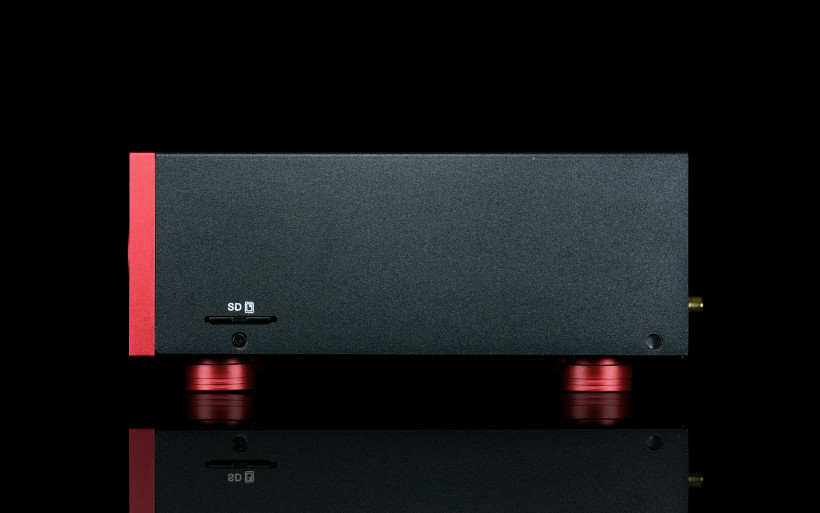 The A1 used as a Bluetooth receiver was the next order of business. Set like so, it sent music stored on my smartphone to the LampizatOr’s machine to effectively compete against a 16GB SD card loaded with the very same repertoire. The wireless streaming method sounded a bit coarser and dynamically compressed in comparison to the same music served via physical carrier, yet tonal balance, imaging, colouring, backdrop cleanliness and virtual sound sources’ contours were very much alike. Point being, the difference was noticeable though not big, which gave a solid reason to think that Soundaware’s BT implementation in the A1 was executed nicely. This functionality in general was found usable and enjoyable for casual listening.
The A1 used as a Bluetooth receiver was the next order of business. Set like so, it sent music stored on my smartphone to the LampizatOr’s machine to effectively compete against a 16GB SD card loaded with the very same repertoire. The wireless streaming method sounded a bit coarser and dynamically compressed in comparison to the same music served via physical carrier, yet tonal balance, imaging, colouring, backdrop cleanliness and virtual sound sources’ contours were very much alike. Point being, the difference was noticeable though not big, which gave a solid reason to think that Soundaware’s BT implementation in the A1 was executed nicely. This functionality in general was found usable and enjoyable for casual listening. And finally, today’s item performed as a standalone solution for headphones/IEMs. The first noticeable thing was the 3.5mm out’s quietness with my sensitive CIEMs. Not a hint of hiss and pristine musical canvas surely helped everything else to flourish, however in a particular and the already well-known direction. Today’s headfi bores shared the same chunky warm voicing with its analog outs, which didn’t come as a surprise. The circuit involved was in large part the same, and that’s why the outcome came down to synergistic connections yet again. Both Beyerdynamic T1 and Vision Ears VE5 sported linear, truth oriented and not bassy sound characteristic, hence naturally were a solid match for Soundaware’s machine. Most likely every other set of cans or IEMs in the same flavouring ballpark would net rather similar effect. The only twist heard in case of full-sized Beyers and tailored to my ears German IEMs, was imaging. Served up close and personal, it boosted immersion at a cost of spatial grandeur and amount of air lesser than I’d like to, put shortly stuffy. A bit more openness would surely help, but other than this I’ve found the result enjoyable; smooth, velvety, pleasantly gravitational and not harsh at all. My Susvara cans had to stay put though, the A1 simply didn’t have what it takes for these to properly get going, but this was no shocker at all.
And finally, today’s item performed as a standalone solution for headphones/IEMs. The first noticeable thing was the 3.5mm out’s quietness with my sensitive CIEMs. Not a hint of hiss and pristine musical canvas surely helped everything else to flourish, however in a particular and the already well-known direction. Today’s headfi bores shared the same chunky warm voicing with its analog outs, which didn’t come as a surprise. The circuit involved was in large part the same, and that’s why the outcome came down to synergistic connections yet again. Both Beyerdynamic T1 and Vision Ears VE5 sported linear, truth oriented and not bassy sound characteristic, hence naturally were a solid match for Soundaware’s machine. Most likely every other set of cans or IEMs in the same flavouring ballpark would net rather similar effect. The only twist heard in case of full-sized Beyers and tailored to my ears German IEMs, was imaging. Served up close and personal, it boosted immersion at a cost of spatial grandeur and amount of air lesser than I’d like to, put shortly stuffy. A bit more openness would surely help, but other than this I’ve found the result enjoyable; smooth, velvety, pleasantly gravitational and not harsh at all. My Susvara cans had to stay put though, the A1 simply didn’t have what it takes for these to properly get going, but this was no shocker at all.
Summary
Even though we might not notice it early on, sometimes truly cool things arrive to us dressed casually as petite and affordable packages, and that’s exactly what today’s Soundaware A1 is. It does many things just right and on several counts goes beyond its own price turf. But most importantly, it’ll give many competitors something to think about, this I’m sure of.
Soundaware A1 ticks all assembly and functionality checkboxes with no questions asked. Years ago an affordable item executed this nicely and as versatile was off the table, but even today to name any alternative with similar price tag is a task to behold. Enthusiasts into multi-purpose budget audio goods will find this report’s machine very easy to use and intuitive, and those sensitive to any wireless shenanigans will appreciate the option of playback directly from connected storage. Readable display, well-organized responsive menu, an abundance of supported file types and formats and standalone work with just headfi products nearby, all seal the deal. The A1 literally does it all.
Due to several rather clear limitations on sound quality count, neither is Soundaware A1 a giant slayer, nor a disappointment in the grand scheme of things, far from it. This machine’s inherently syrupy headphone and analog outs taken into account is the key to extracting the very best out of it, hence marriages to oppositely voiced companions have the highest chance of success. However, Soundaware’s latest throws punches far above its weight if used solely as a storage/transport. It truly excels on this count, and that’s why should be viewed as mandatory audition not only to individuals after budget plug&play cases, but also those into quality streamers capable of service both inside and out of home network. ‘Till next time!
Associated Equipment:
- Amplifier: Trilogy 925, Kinki Studio EX-M1
- Preamplifier: Thöress DFP
- DAC: LampizatOr Pacific (KR Audio T-100 + KR Audio 5U4G Ltd. Ed.)
- Speakers: Boenicke Audio W8
- Transport: fidata HFAS-S10U
- Speaker cables: Audiomica Laboratory Celes Excellence, LessLoss C-MARC
- Interconnects: Audiomica Laboratory Erys Excellence
- Power components: Gigawatt PC-3 SE EVO+, Gigawatt PF-2 + Gigawatt LC-2 MK2 + Forza AudioWorks Noir Concept/Audiomica Laboratory Ness Excellence/LessLoss C-MARC
- Rack: Franc Audio Accesories Wood Block Rack
- Music: NativeDSD
Retail prices of reviewed components in EU (incl. VAT):
- Soundaware A1: €640
Manufacturer: Soundaware



